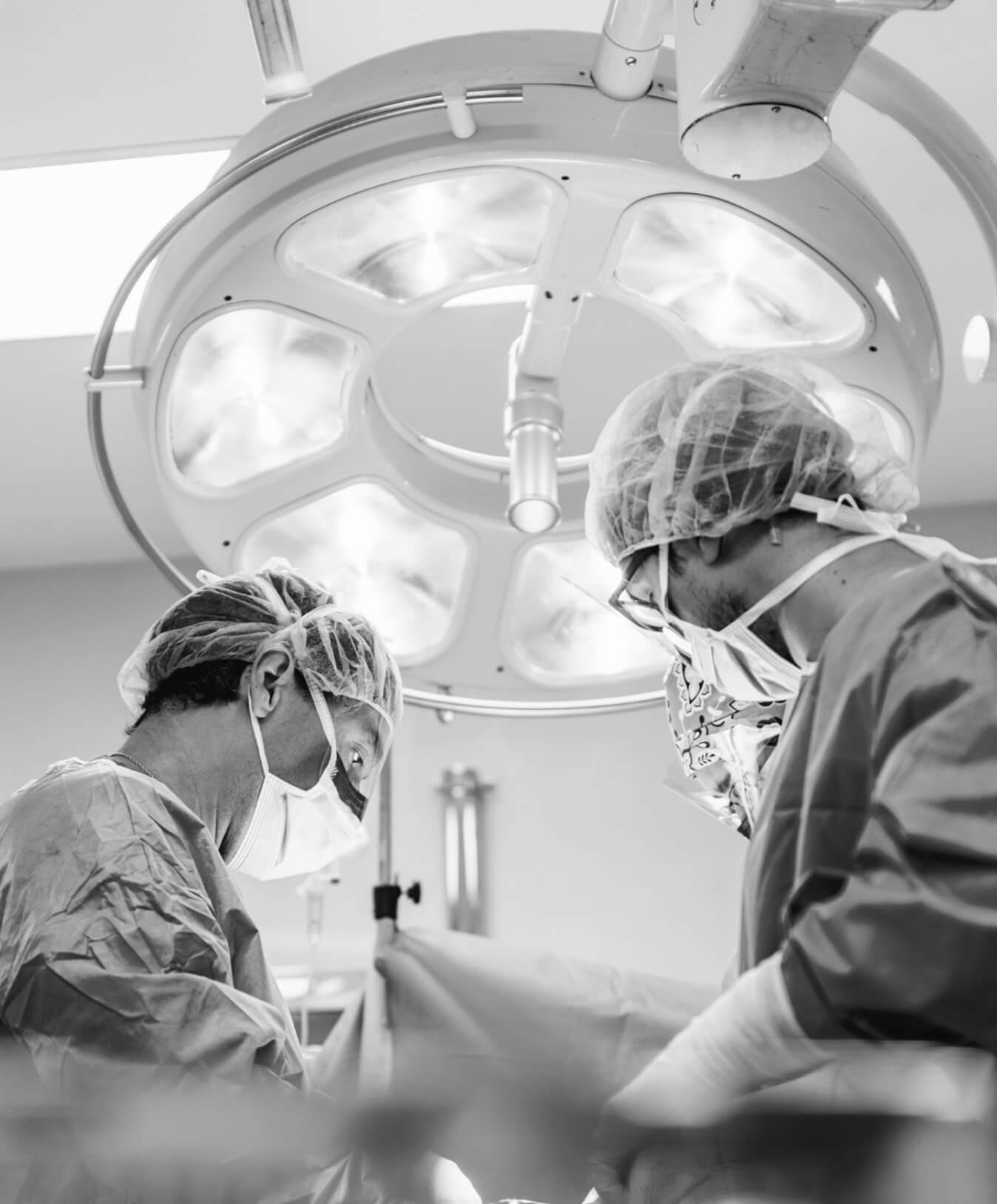Spinal Treatments
Tumour resection
An artificial cervical disc replacement is a procedure that involves replacing a worn or degenerated intervertebral disc in the neck region with an artificial disc made of metal, or a combination of metal and plastic. Cervical discs act as cushions between the vertebrae and allow the neck to move freely.

When might an artificial cervical disc replacement be recommended?
The aim of an artificial cervical disc replacement is to preserve the normal motion of the neck. The procedure can be an alternative to spinal fusion surgery (the joining of two or more vertebrae that prevents movement).
After a detailed clinical examination and a thorough review of your imaging, Dr Pun might recommend an artificial cervical disc replacement if:
- Pain can be pinpointed to one or two discs in the neck region
- You have had no previous spinal surgeries in the affected cervical level
- You are at a healthy body weight
- You do not have a significant spinal deformity
- There is no significant facet joint disease or bony compression on spinal nerves.
How to prepare for artificial cervical disc replacement surgery
Stop smoking
Dr Pun will advise you to stop smoking or using tobacco products. Smoking is known to raise the risk of surgical complications and have a negative impact on the healing process.
Review your medications
Dr Pun’s clinical team will review your medications and supplements to advise if any of them may impact the surgery or your recovery. For example, some medications increase the risk of excessive bleeding during surgery or negatively interact with anaesthesia: these may need to be temporarily stopped.
Physical examination
Your overall health will be evaluated to make sure you can tolerate the surgery and the recovery. Blood tests, x-rays, and other tests will be used to give insight.

What does artificial cervical disc replacement surgery involve?
Once you are under general anaesthesia (unconscious), Dr Pun makes an incision on the front of your neck. Through this opening, he carefully moves your neck’s important structures aside so he can see the bones of the vertebrae and the discs between them.
He then removes the affected disc and any disc fragments or osteophytes (bone spurs) pressing on a nerve root or your spinal cord. Once the space is clear, he restores the disc space to its normal height. This helps relieve pressure on the surrounding nerves.
Using fluoroscopy (live X-ray imaging), Dr Pun places the artificial disc into the prepared disc space. He attaches the replacement disc to the vertebrae above and below it, then closes the incision from the inside with absorbable sutures.
More sutures are made at the skin’s surface to help minimise scarring, and a small dressing is applied over the wound. After the surgery is complete, you will be brought to a recovery area while you wake up from the anaesthetic.

Post-care treatment following artificial cervical disc replacement surgery
Your first week recovery from artificial cervical disc replacement surgery focusses on rest and pain management. However, you will be encouraged to get out of bed and walk around as soon as you are able to.
Dr Pun will also recommend limiting or avoiding certain activities in the first two weeks after surgery. These include:
- Work
- Vigorous exercise, including running and bike riding
- Lifting heavy objects (nothing greater than 4 kilograms)
- Submerging the wound in water
- Driving while on medication that may cause drowsiness or impair reflexes
- Extending the head and neck too far forward or backwards.
You should be able to return to normal activities by four to six weeks.
Risks of artificial cervical disc replacement surgery
All surgical procedures have benefits and risks. The risks associated with spinal surgery and an artificial cervical disc replacement include:
- An allergic reaction to the implant material
- The implant bending, breaking, or moving
- Numbness or tingling in the hands or feet
- Excessive bleeding
- Tissue swelling
- A tear in the protective membrane (dura) covering the spinal cord
- Nerve or spinal cord injury, possibly causing impairment or paralysis
General surgical risks include:
- Anaesthesia complications
- Blood clots
- Allergic reactions
- Undiagnosed medical problems such as heart disease.
What is the cost of artificial
cervical disc replacement surgery?
Dr Pun’s fees are guided by the Australian Medical Association’s fee schedule. Every surgery quote is itemised and includes the cost of the operation, the management and reviews during your inpatient stay in hospital, and all post-operative consultations.